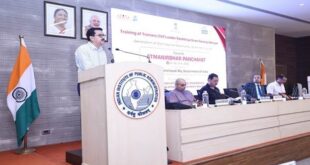- The ongoing 74th World Health Assembly declared 30th January as ‘World Neglected Tropical Diseases (NTD) Day.
- The proposal to recognise the day was floated by the United Arab Emirates. It was adopted unanimously by the delegates. The first World NTD Day was celebrated informally in 2020.
- The World Health Assembly is the decision-making body of World Health Organization (WHO).
Important points:
- NTDs are a group of infections that are most common among marginalised communities in the developing regions of Africa, Asia and the Americas. They are caused by a variety of pathogens such as viruses, bacteria, protozoa and parasitic worms.
- NTDs are especially common in tropical areas where people do not have access to clean water or safe ways to dispose of human waste.
- These diseases generally receive less funding for research and treatment than malaises like tuberculosis, HIV-AIDS and malaria.
- Examples of NTDs are: snakebite envenomation, scabies, yaws, trachoma, Leishmaniasis and Chagas disease etc.
London Declaration on NTDs:
- It was adopted on 30th January, 2012 to recognise the global burden of NTDs.
- Officials from the World Health Organization (WHO), the World Bank, the Bill and Melinda Gates Foundation, representatives from leading global pharmaceutical companies as well as representatives of several national governments met at London’s Royal College of physicians to pledge to end the diseases.
- From measuring process to measuring impact.
- From disease-specific planning and programming to collaborative work across sectors.
- From externally driven agendas reliant to programmes that are country-owned and country-financed.
Indian Initiatives to Eliminate NTDs:
- The Accelerated Plan for Elimination of Lymphatic Filariasis (APELF) was launched in 2018, as part of intensifying efforts towards the elimination of NTDs.
- A WHO-supported regional alliance established by the governments of India, Bangladesh, and Nepal in 2005 to expedite early diagnosis and treatment of the most vulnerable populations and improve disease surveillance and control of sandfly populations (Kala-azar).
- India has already eliminated several other NTDs, including guinea worm, trachoma, and yaws.
SOURCE: THE HINDU,THE ECONOMIC TIMES,MINT
 Chinmaya IAS Academy – Current Affairs Chinmaya IAS Academy – Current Affairs
Chinmaya IAS Academy – Current Affairs Chinmaya IAS Academy – Current Affairs



